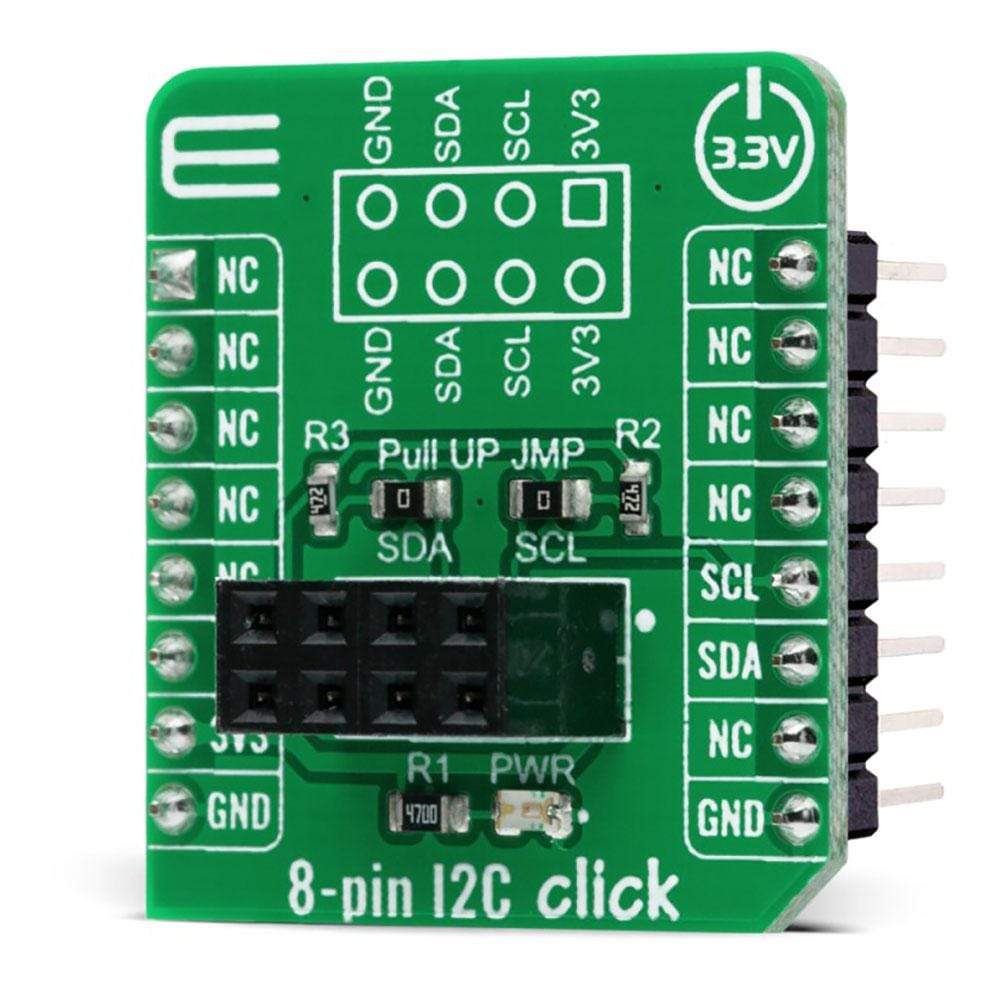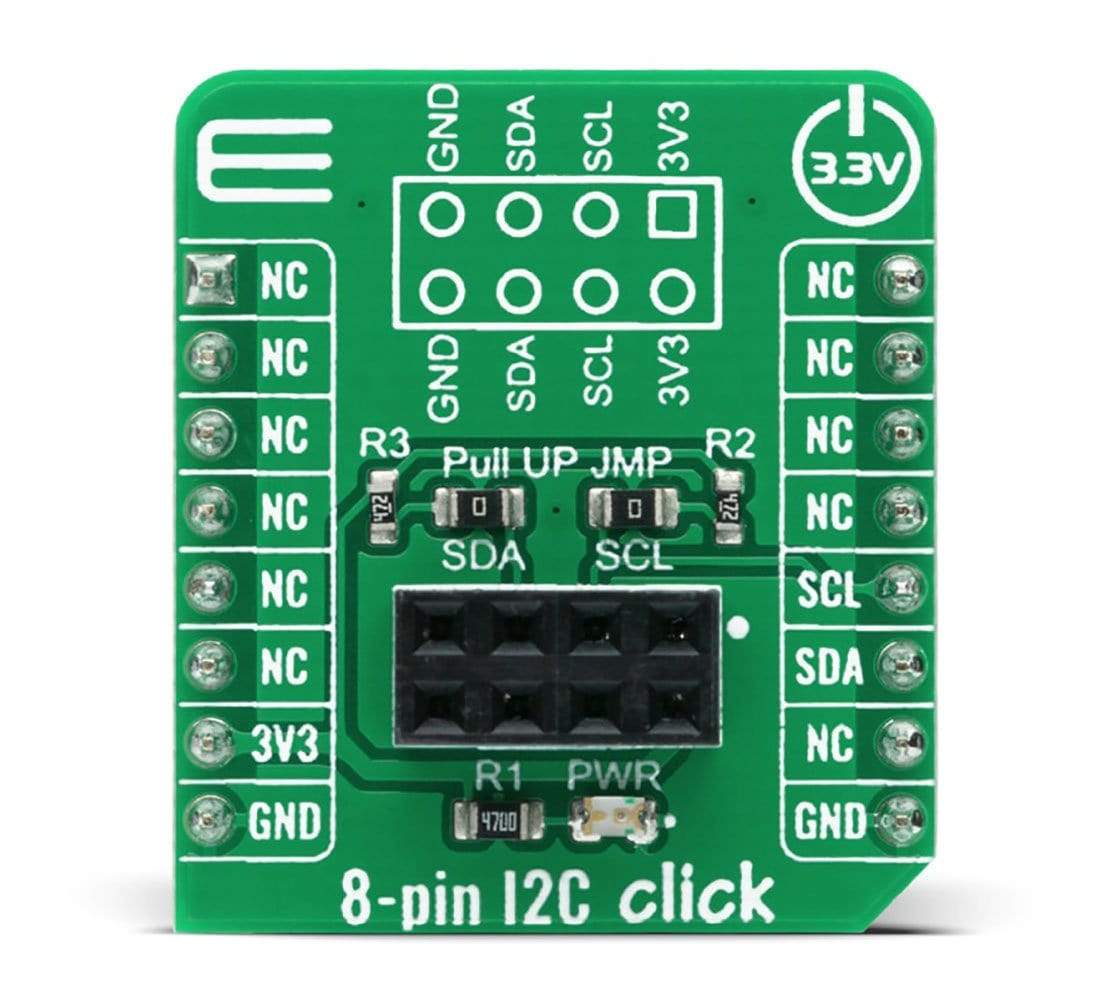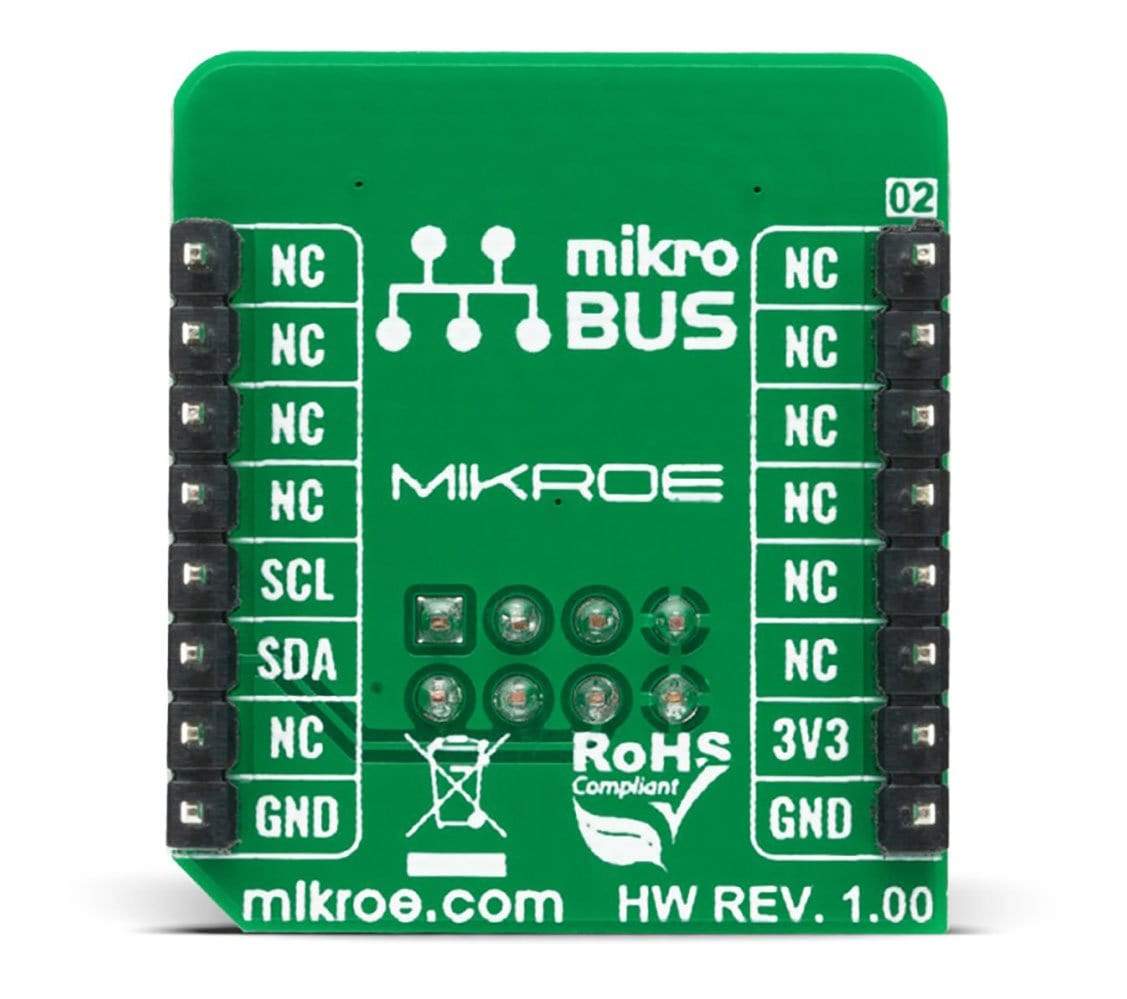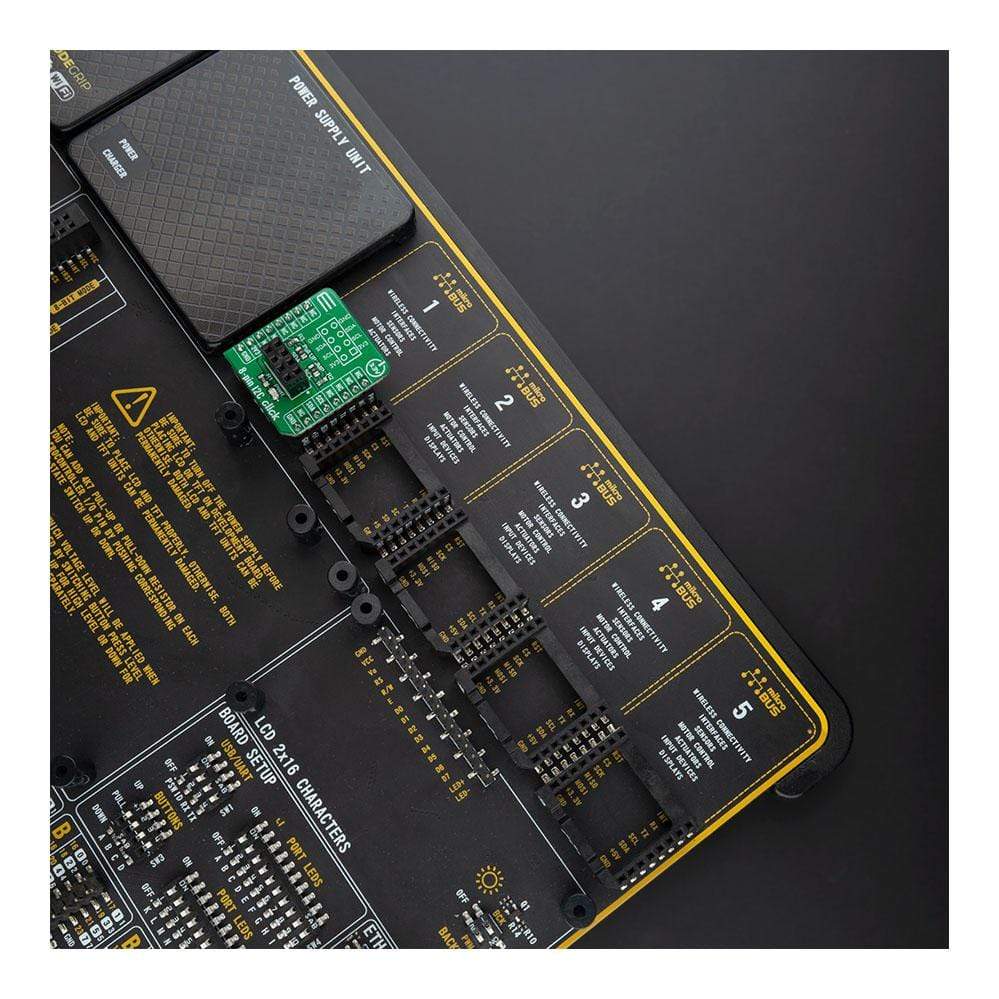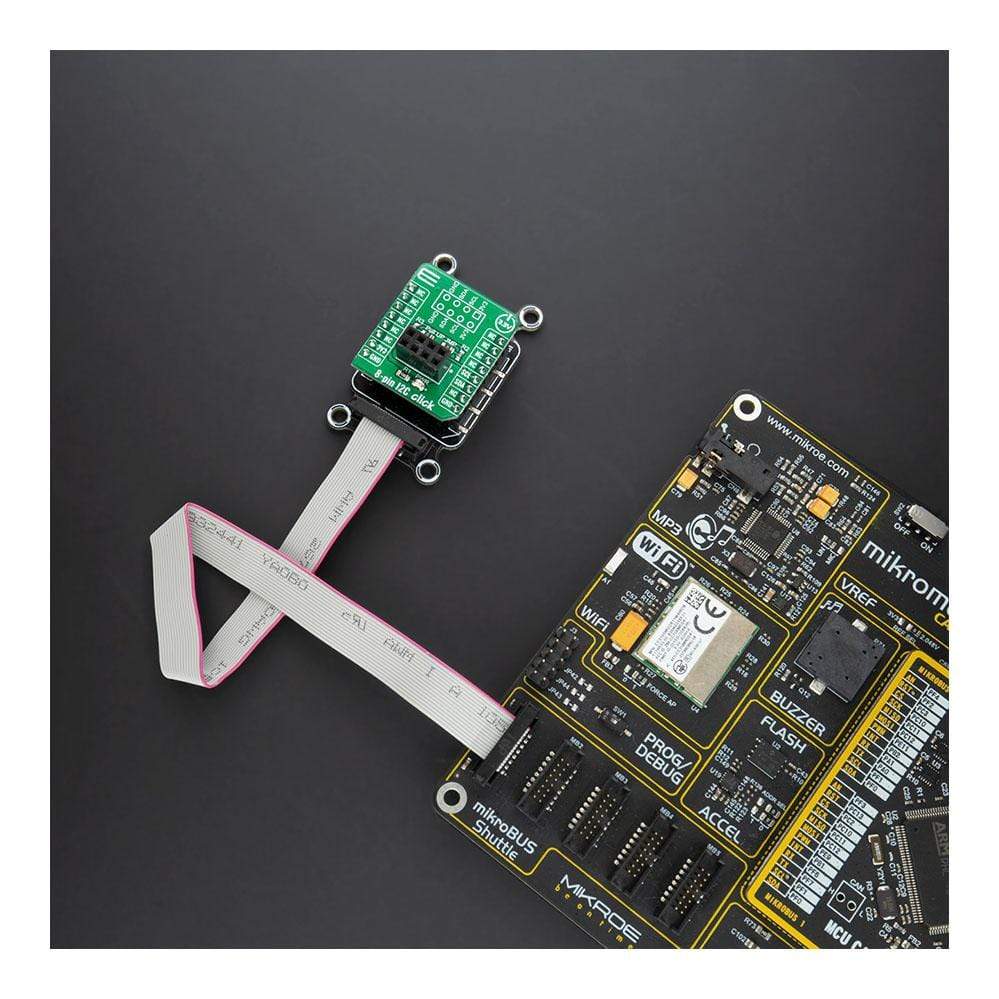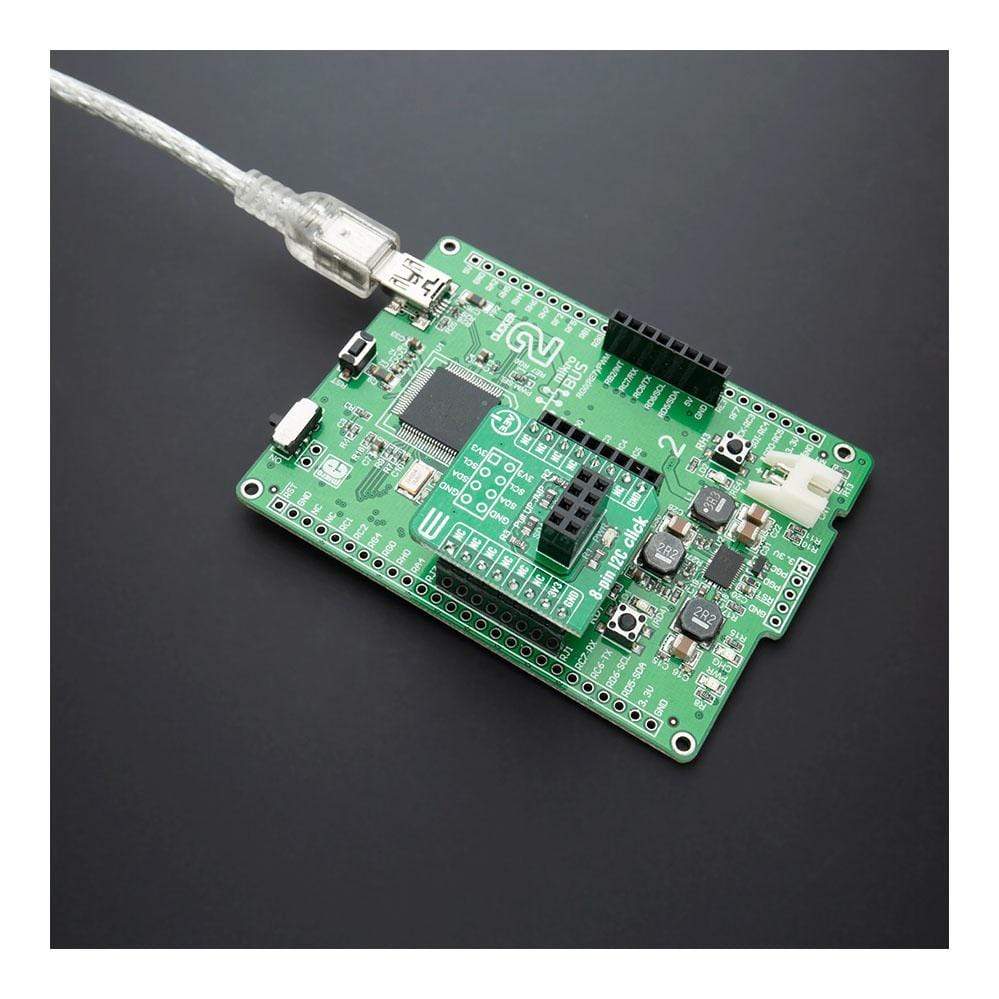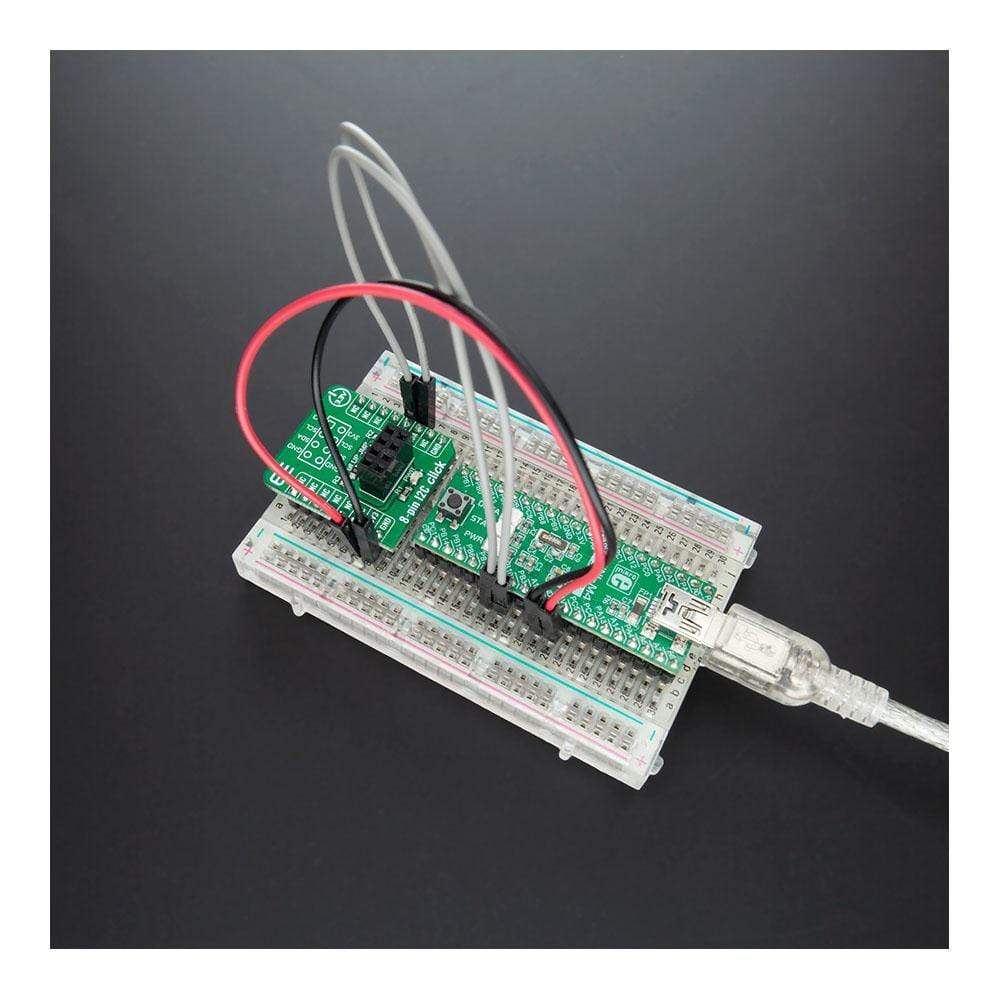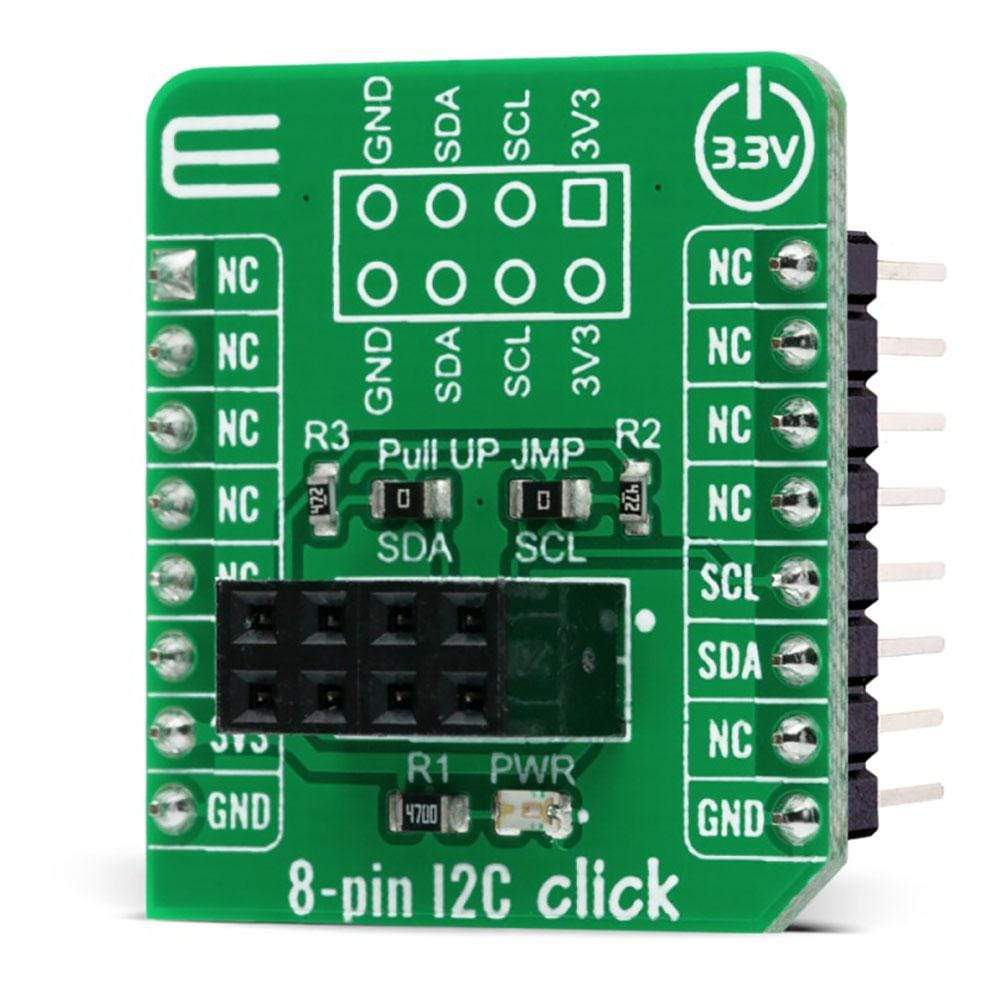
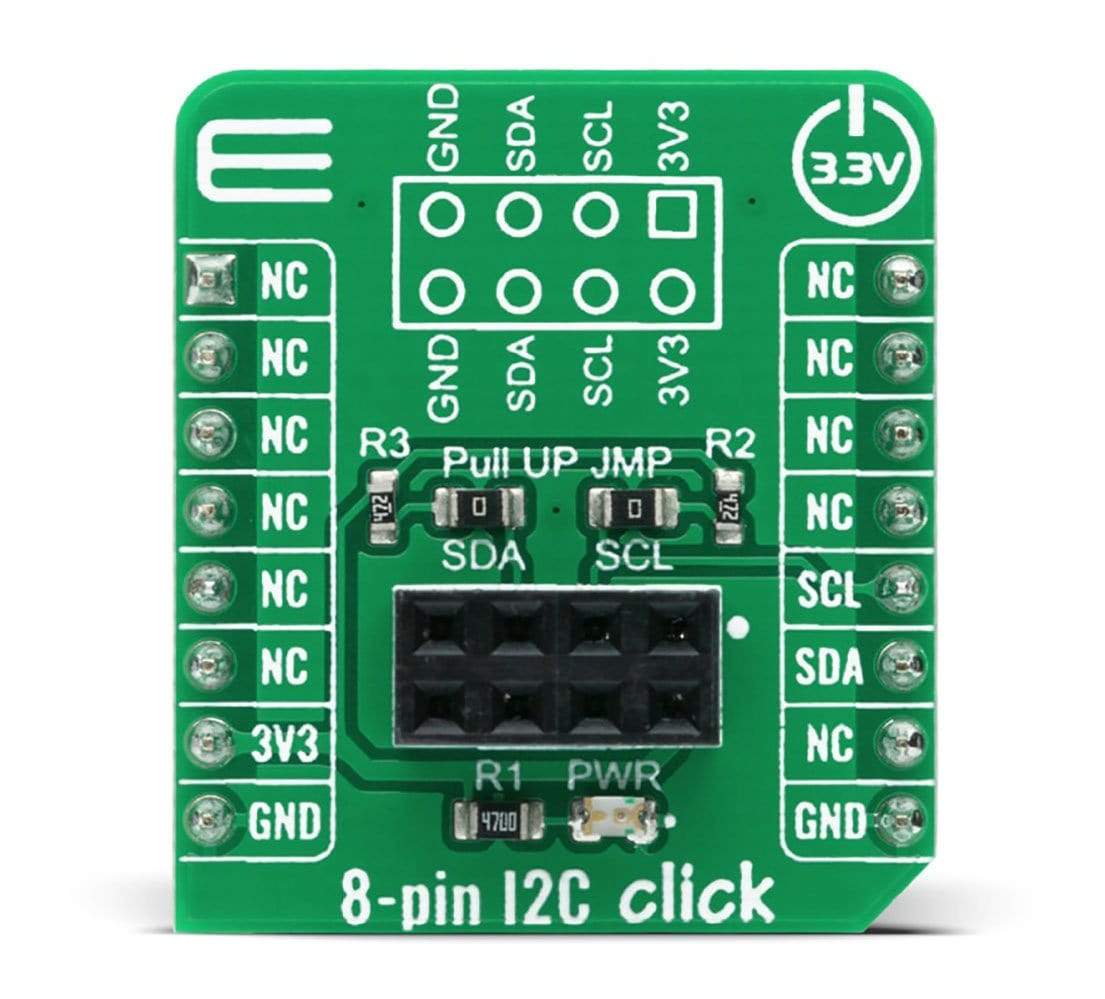
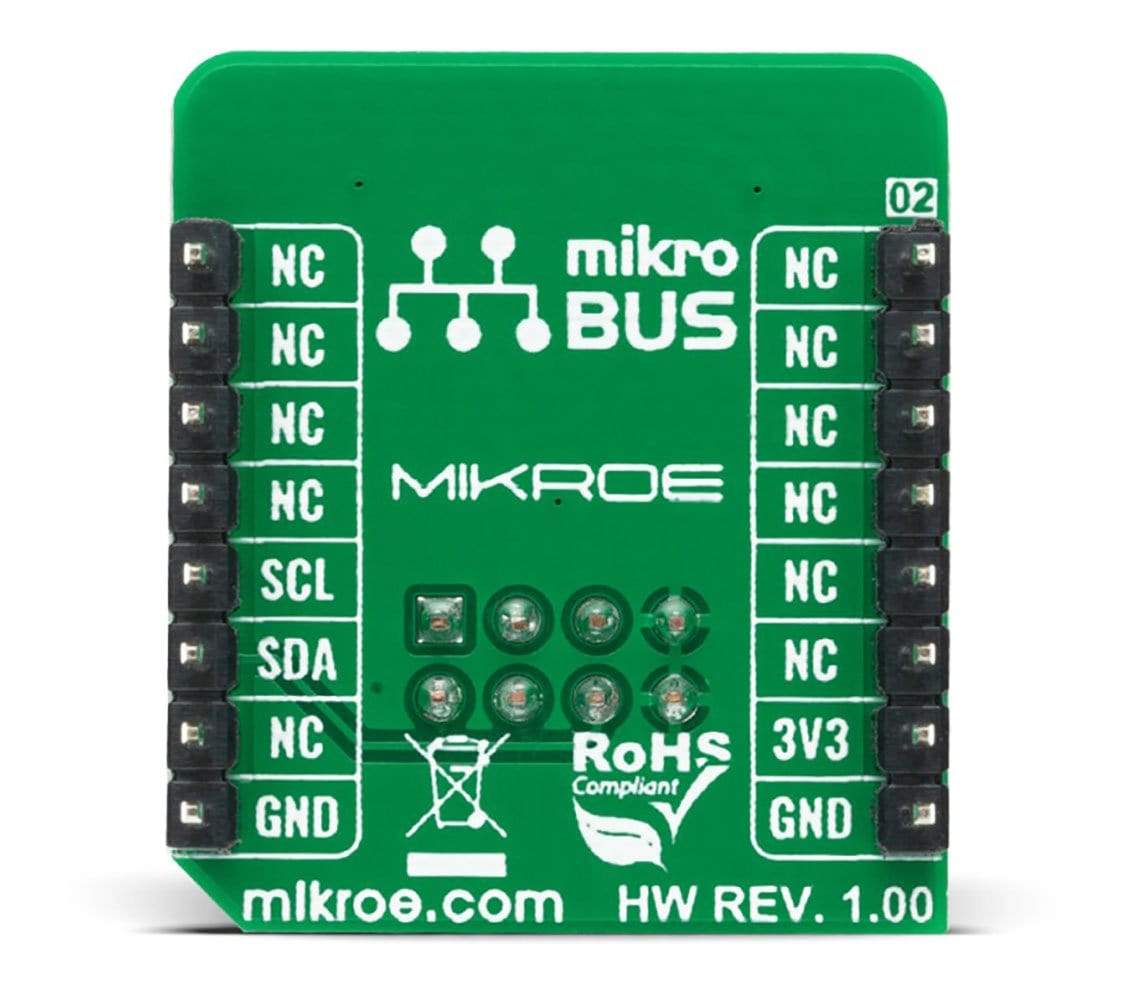
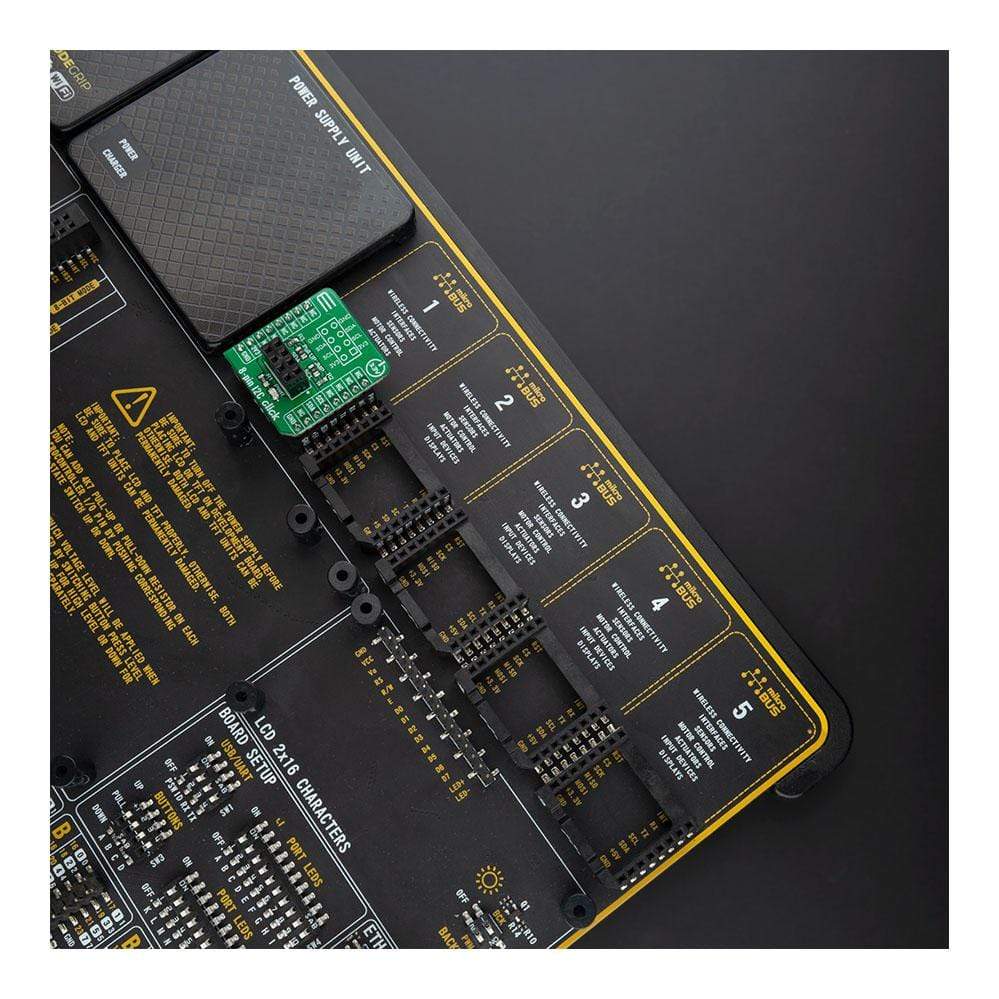
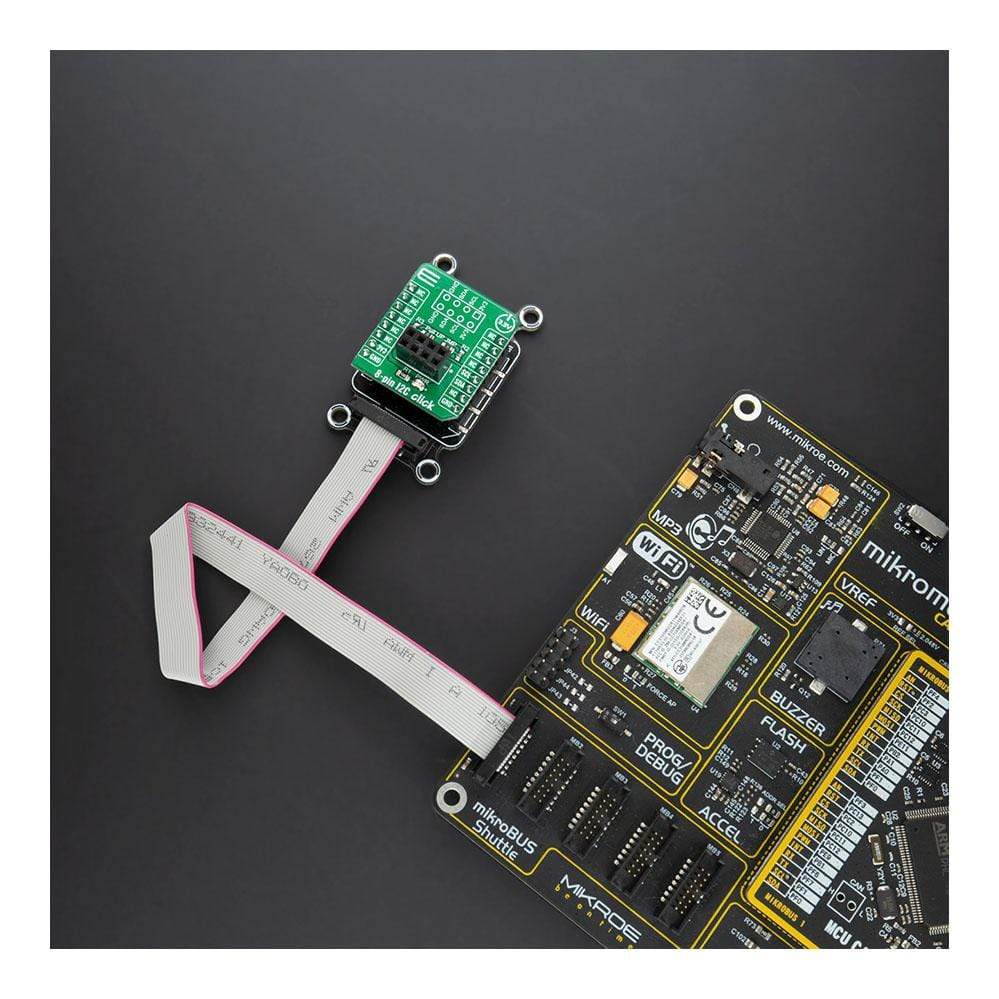
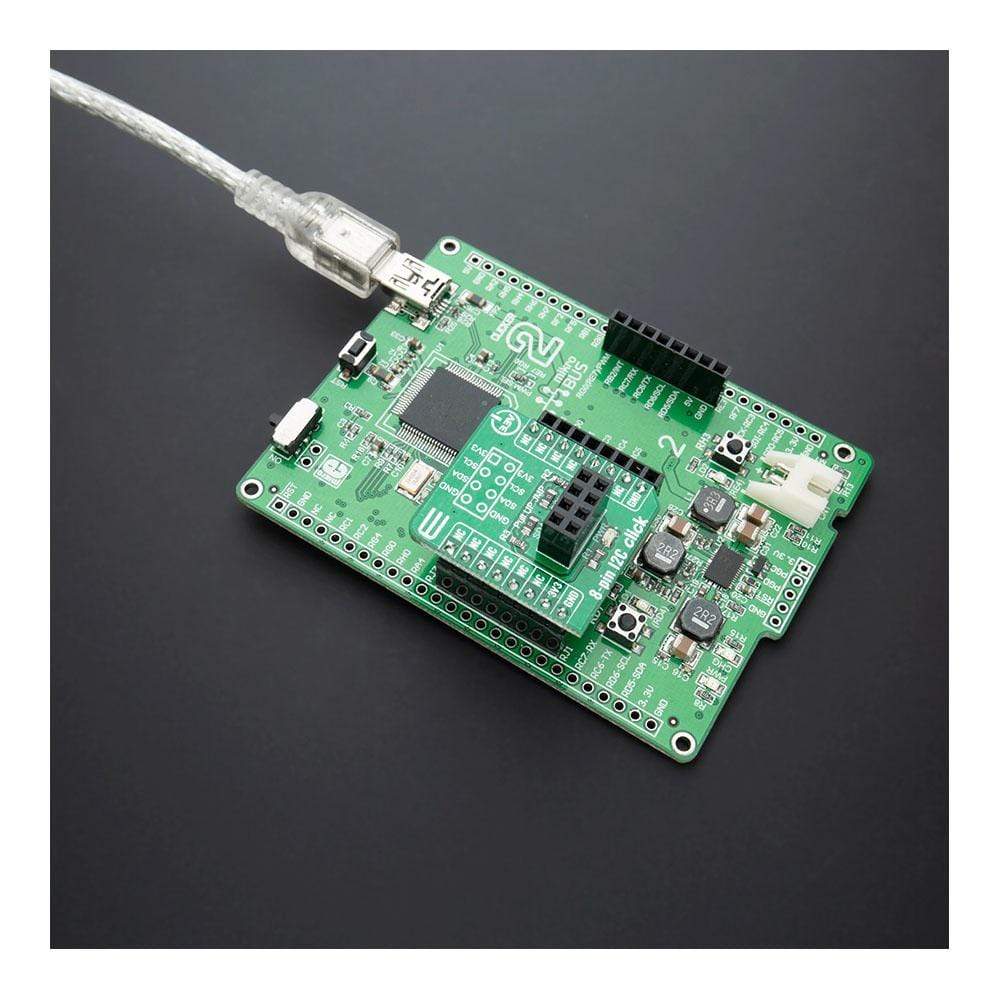
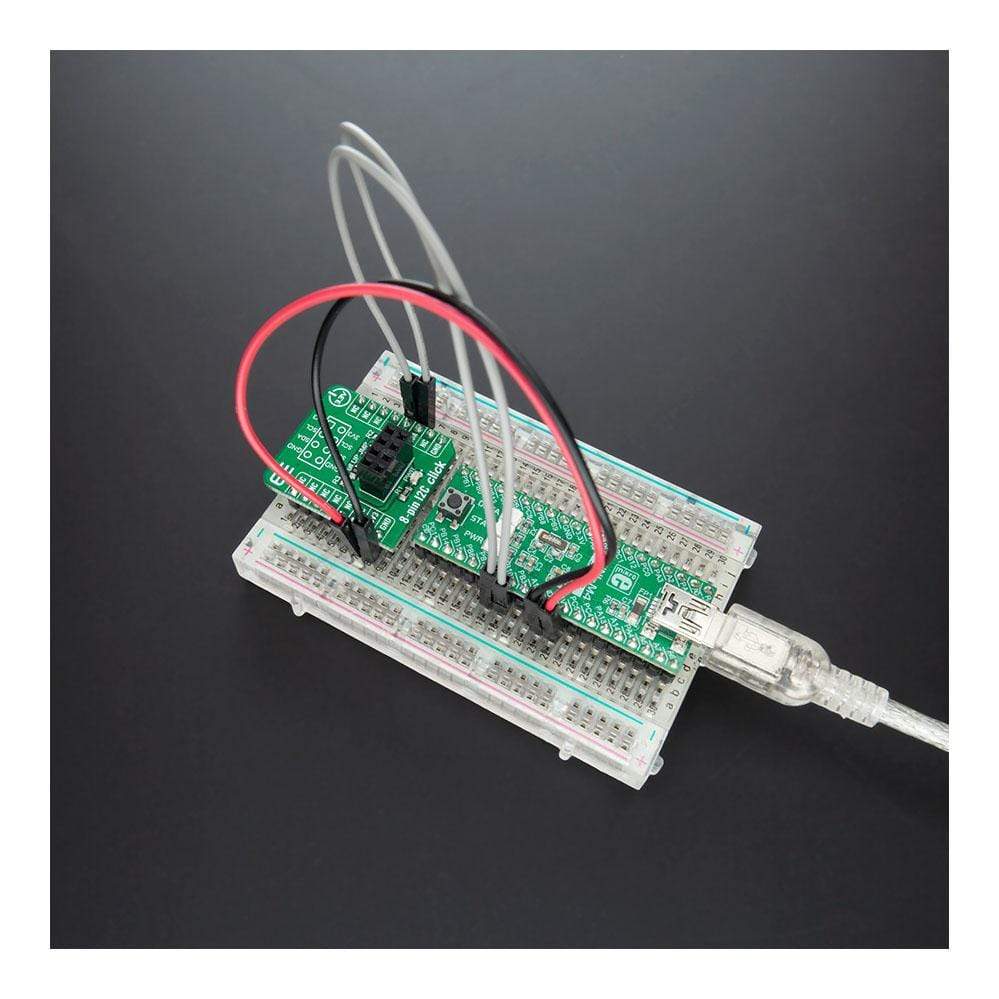
Overview
The 8-pin I2C Click Board™ is a compact add-on board that represents a breakout board that simplifies the connection of add-on boards with an 8-pin Female Connector to mikroBUS™ socket. This board can be used as I2C Adapter with no main component on itself, with only an onboard connector for connection establishing. The 8-pin I2C Click Board™ has no regional restrictions, no need for special permits, and it is possible to use this Click Board™ worldwide. Being compatible with MFI (Made for iPod) is the most important feature of the 8-pin I2C Click Board™ which ensures its proper operation with additional Apple accessories. This Click Board™ is suitable for expanding the connectivity of the development system with the mikroBUS™, and ideal for communication with numerous devices that share the identical slave address on the same bus.
The 8-pin I2C Click Board™ is supported by a mikroSDK compliant library, which includes functions that simplify software development. This Click Board™ comes as a fully tested product, ready to be used on a system equipped with the mikroBUS™ socket.
Downloads
La carte Click Board™ I2C à 8 broches est une carte d'extension compacte qui représente une carte de dérivation qui simplifie la connexion de cartes d'extension avec un connecteur femelle à 8 broches à la prise mikroBUS™. Cette carte peut être utilisée comme adaptateur I2C sans composant principal, avec seulement un connecteur intégré pour établir la connexion. La carte Click Board™ I2C à 8 broches n'a aucune restriction régionale, aucun besoin d'autorisation spéciale et il est possible d'utiliser cette carte Click Board™ dans le monde entier. La compatibilité avec MFI (Made for iPod) est la caractéristique la plus importante de la carte Click Board™ I2C à 8 broches qui garantit son bon fonctionnement avec des accessoires Apple supplémentaires. Cette carte Click Board™ est adaptée pour étendre la connectivité du système de développement avec le mikroBUS™ et idéale pour la communication avec de nombreux appareils qui partagent la même adresse esclave sur le même bus.
Le Carte Click Board™ I2C à 8 broches est pris en charge par une bibliothèque compatible mikroSDK, qui comprend des fonctions qui simplifient le développement logiciel. Cette Click Board™ est un produit entièrement testé, prêt à être utilisé sur un système équipé du socket mikroBUS™.
| General Information | |
|---|---|
Part Number (SKU) |
MIKROE-4241
|
Manufacturer |
|
| Physical and Mechanical | |
Weight |
0.017 kg
|
| Other | |
Country of Origin |
|
HS Code Customs Tariff code
|
|
EAN |
8606027380525
|
Warranty |
|
Frequently Asked Questions
Have a Question?
Be the first to ask a question about this.

